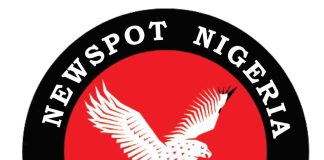“Give a person a fish and you feed them for a day; teach a person to fish and you feed them for a lifetime.”
It’s a proverb we all know — so common it’s become cliché. But clichés come from truth. Amid the busyness of running a business, it can be easy to forget the importance of good training. How often have you said, “I’ll do it myself” because teaching someone else seemed too time-consuming? But how often are you frustrated the next time that same task comes around and you have to do it yourself again?
Of course, training isn’t just about delegating or making things easier for management. A solid and unique training and development program can give individuals a sense of ownership in their role and a future vision. And when people don’t invest in learning and development and create paths for growth (beyond immediate gains), looking for jobs everywhere becomes the other of the day
In fact, in a 2021 Pew Research Study, 63% of respondents said no opportunities for advancement is what pushed them out the door. Lack of growth opportunities was the top reason for leaving – above pay, benefits, and workplace flexibility.
A recent Great Place to Work LinkedIn poll also shed light on the critical importance of training and developing employees for retention. According to the poll, 43% of people called out a lack of growth opportunities as the top reason they quit their last job.
63% of people cite no opportunities for advancement as the top reason they quit.
“Employees view it as a way of support,” says Julian Lute, senior manager and strategic advisor with Great Place To Work®. “You’re assisting them in doing their jobs. But if you go one level deeper, you’re also supporting this very human need for growth. When people don’t see themselves growing, you don’t get the best out of them.”
What is a training and development program?
A training and development program is a series of educational activities designed to improve employees’ knowledge and skills.
The most obvious type of training is technical training — teaching people job duties, the work processes and systems, and the organization’s overarching mission and mandate. But training can also cover soft skills such as people management or upskilling beyond a current role to prepare them for new opportunities.
In a related development, employee training can take many different forms, such as group workshops, one-on-one sessions, formal education (e.g., college or university), job shadowing, mentorship, seminars, or job sharing.
The 4 approaches to employee development
While the types of employee training and development programs can be as varied as your employees themselves, all training plans will typically fall into one of four categories:
Formal education — The formal training and practical requirements for a given role, such as a specific degree, license, or certification.
Assessment — The employee performance reviews, one-on-ones, and any other efforts used to measure strengths and weaknesses and find ways for employees to improve.
Job experience — The day-to-day, hands-on learning employees do as they master their roles, take on new challenges, and grow within the organization.
Interpersonal relationships — The coaching, mentorships, and any soft skills or interpersonal training employees may complete, such as customer service training, diversity and inclusion training, mental health education, or conflict resolution training.
Why it’s important to train and develop your employees
Employee training and development is important for ensuring that staff are prepared for their role; that they feel supported, valued, and capable; and that they have upward movement. Training and development can have a direct impact on employee engagement and retention and should be an integral part of your talent management strategy.
Engaged employees want to grow, and they want to be challenged. They aren’t looking to simply work at a job; they are looking to further their careers.
The difference between training and development
While employee training and development are commonly lumped together, and both serve a critical role in the employee experience, there is an important distinction between the two.
Training is job-specific. It is ensuring an employee has the correct tools and learns the correct skills to complete their tasks. It is immediate and measured in short-term results.
Development is about employee growth. It is long-term and more behavioral-focused.
Development is much more of a conversation than training, “Where do you want to grow? How do we need you to grow? It requires a bit more vulnerability.
Training assumes you have a skill gap or knowledge gap, whereas with development, you must be willing to lean into it to fully realize the benefits.”
For example, Mastercard has a company philosophy of “Owning Your Career” with ongoing conversations between employees and their managers about career development opportunities. Objectives are set, goals are agreed upon, and there are dedicated discussions about career growth and progression.
Similarly, American Express has a Career & Development Plan template for employees to map out their career journey, thinking through where they’ve been, how they want to grow, and what sort of support they might need along the way.
Both employers demonstrate how employee development is a two-way conversation, not a one-way, top-down instruction. This kind of approach to employee development can have a huge impact on employee engagement, especially among younger demographics.
Development is a two-way conversation, not a one-way, top-down instruction.
Training fuels recruitment
Given the basic human desire for growth, those who are seeking top talent would be wise to promote their training and development efforts. Featuring opportunities for growth and development as major benefits in its EVP demonstrates an employer’s commitment.
Use your career site to highlight your company’s opportunities for professional growth and development — whether it be challenging work assignments, a strong investment in training and development programs, frequent opportunities to work closely with senior leaders, or a commitment to promoting from within.
Even if you don’t know where people want to be in their life or what’s important to them, I guarantee you there is something at the end of the rainbow for them, training and development is the way that people feel valued.
Developing by building an internal talent marketplace
Some organizations are helping employees advance with an internal talent marketplace. An internal talent marketplace is a platform or system within an organization that facilitates identifying, developing, and retaining top talent by providing employees with opportunities for growth and career advancement.
This marketplace enables employees to explore different roles, projects, or positions within the company, promoting internal mobility, skill development, and cross-functional collaboration. By creating an internal talent marketplace, organizations can better retain talent, improve employee satisfaction, and enhance their overall agility while reducing the need for external hiring.
Examples of unique employee training and development programs
Employee training programs at the Best Workplaces go beyond the day-to-day of employees’ jobs — they feature everything from professional development courses for future promotions, to emotional intelligence training, to wellness workshops.
The Best Workplaces also offer training programs that are ongoing, beginning on an employee’s first day and carrying through their entire life cycle with the company. They know that training applies to all levels of staff, from frontline workers to the C-suite, with a focus on forward momentum for all.
*Five steps to building a successful training plan*
For an employee training and development plan to be successful, you need to ensure it’s focused on the right things, suitable to the audience, and measurable. And you need to be willing to revise as needed, based on both results and stakeholder feedback.
Here are five steps to ensure you roll out an employee training and development plan efficiently and successfully:
1. Assess what’s needed
Before any plan takes shape, assess what is needed — both by the organization and by the employee. This applies to both company-wide training and personal development plans. Which areas should you focus on? What is the organizational strategy and how does this fit into an employee’s role and personal goals?
You have to incorporate it into the workflow. Ascertain what people need and directly deliver to that.
For example, your company could be rolling out a new software program that’s going to change how your sales team tracks leads. It will be a critical change for the business and the initial plan may be to train only those who will use the new program day-to-day. What about the employees whose personal goal is to join the sales team? Learning such a program could help them make that move.
Get feedback using employee surveys, People will tell you what they need help with or training on. Sometimes leaders think that because they got this new thing, or because some consultant tells them, ‘You need this, it’ll make you more efficient.’ Start with what you know employees need and what they’re telling you they need.
2. Set clear objectives
What do the organization and the employee each hope to gain? It could be something job-specific like learning a new program or process, or something more behavioral-based like diversity and inclusion training. Determine what you hope to achieve and how you’ll measure success.
It’s also important that employees understand the objectives just as well as management does, and why a particular training or development plan is important. This is especially the case when it’s long-term, behavioral-based programs like diversity, equity & inclusion (DEI) training.
“Employee training is most effective when leaders are demonstrative, When communicating new learning programs, talk about it through the lens of company values. For example, ‘We’re doing this in service of our customers and that’s one of our values.’… Be very clear about what this is supposed to change. Help people understand the impact and why you’re training people.”
3. Design and develop
Once needs and objectives are set, it’s time to create a program or plan that considers the following:
What content or materials are needed?
How will the training be delivered?
Who will lead the training?
How often will training sessions take place?
Where will the training happen?
For group training, what size will the groups be?
What are the participants’ learning styles?
Julian recommends that participants be given the chance to talk through the training, to understand what fits and wrestle with problems, rather than running passive sessions where the trainer talks and participants sit and listen.
He also notes that bite-sized lessons and trickling the training down from large groups to small groups to the individual level, like a waterfall, tend to work best.
Trickling the training down from large groups to small groups to the individual level, like a waterfall, tends to work best.
“I would not expect to put people in a room for 90 minutes at one time and expect they get all the information they need,” he says. “A big group is a way to get people on the same page. Then move people into smaller groups so that people can engage with the learning content. A group of eight or fewer is ideal for getting more granular. And then find ways for people to individually test their knowledge.”
4. Implement
Once the training plan is developed, it’s time to roll it out —strategically. A pilot program with a small group of employees can help you refine a plan and ensure it’s hitting all the right notes, both for the organization’s objectives and employees’ expectations.
Don’t try to boil the ocean, figure out who the test people are and pilot this with a small group of people. Take feedback. Make sure it’s aligned with the business need.
Only after you’ve piloted the program and adjusted as needed, is it ready to roll out to the wider organization.
5. Evaluate and revise
Finally, don’t file the training plan away once it’s completed. Solicit feedback from both employees and managers using employee surveys to identify both successes and weaknesses. Use the measurements you set early on to check whether the training achieved its objectives.
Providing employee training and development opportunities can enhance job satisfaction, boost productivity, and improve employee retention. Equipping employees with new skills and knowledge increases their potential for advancement within the company. It’s a win-win situation for everyone involved.
Are your learning and development programs hitting the mark?
One way you can measure and track the success of your training and development programs, as well as other areas of company culture, is by pursuing Great Place To Work Certification. The results of our research-backed Trust Index™ survey can show you exactly where to put your cultural resources.
Adunke Olatunji
Share your story or advertise with us: Whatsapp: +2347068606071 Email: info@newspotng.com















